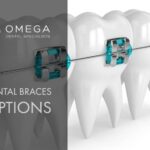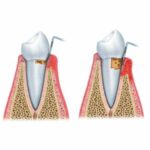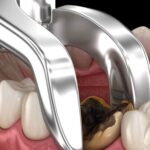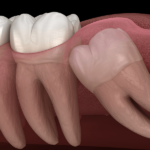Ridge Augmentation and Sinus Lift
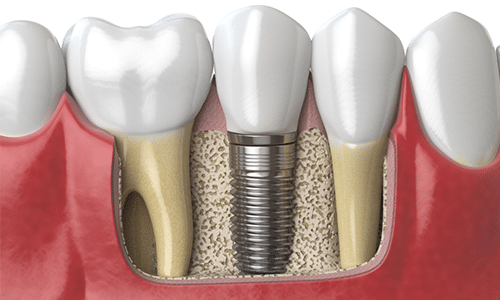
Table of Contents
Can I get implants if I have a bone loss?
Dental implants are placed directly into the jawbone, if there is a lack of bone mass in the target area, the implant procedure simply will not be possible. Sometimes patients don’t have enough jaw bone to support dental implants or even dentures. There are a couple of different techniques that we can use to augment the bone to prepare the area for dental implants or dentures. After teeth extraction, if the surgeon decided the area is not ready for immediate implant placement socket preservation is recommended. In cases like trauma, or long-standing gum disease that the patient has already lost a significant amount of bone, a ridge augmentation or sinus lift is recommended.
What Is Ridge Augmentation?
A specific type of dental procedure known as ridge augmentation is commonly performed following a routine tooth extraction. The procedure is intended to duplicate the natural contour of the jaw and gums. This type of procedure is frequently incorporated as a way to compensate for lost bone as a result of tooth extraction or for some other reason. In basic terms, there is a section of the jaw known as the alveolar ridge that essentially surrounds the tooth roots. Any time a tooth is extracted there remains an empty socket in the alveolar ridge bone. Fortunately, an empty socket will in many cases heal on its own eventually filling with bone and tissue.
In other cases, however, following tooth extraction, the bone surrounding the socket becomes unstable and has difficulty healing on its own. In this situation, the height and width of the socket deteriorate steadily over time. The main objective of ridge augmentation is to effectively rebuild the original width and height of the alveolar ridge. This is especially important when anticipating dental implant placement at some time in the future. As is the case, dental implants required a firm and established a base of bone to support their structure. Ridge augmentation is important in rebuilding bone that will eventually accommodate implants.
What is Sinus Lift?
Located behind the cheeks, the maxillary sinuses are situated on top of the upper set of teeth. These are air-filled spaces that are essentially empty and that are of concern because of their proximity to the upper set of teeth. There are times when upper tooth extraction results in only a thin wall of bone separating the oral cavity and the maxillary sinus. This is a critical consideration when talking about dental implants because if the sinus wall is too thin, dental implant placement is not possible. The sinus lift treats bone height deficiencies in the rear area of the upper jaw. For a stable implant, the lining of the sinus cavity be raised, and bone will be placed to increase the height of the rear jaw before we can place implants. Depending on how much space is needed, this may be done before or at the same time as the implant procedure. A sinus lift may be necessary if:
1- You are missing more than one tooth in the back of your jaw
2- You have a significant bone loss in the jaw posterior
3- You have a tooth loss from a birth defect
What is important to understand is that the best way to ensure long-lasting success about dental implants is to support the quality of jawbone to which the implants are secured. Any time there has been a bone loss as a result of periodontal disease or injury, a sinus augmentation procedure may be needed to raise the sinus floor thereby encouraging new bone development or formation. Interestingly, a sinus lift is perhaps one of the most common types of bone grafting procedures needed to address the issue of bone loss in the upper jaw region. The goal of the procedure is to simply grow bone in the maxillary sinus floor that is positioned above the bony ridge of the gum line. Once new bone growth has been established, dental implants can be securely placed.
What Is Socket Preservation?
When patients experience pain, bone loss or infection as a result of a fractured tooth, it may be necessary to have the tooth removed. The socket is the bone structure that holds the tooth in place and can sometimes become damaged by disease or infection. In other situations, natural deformities of the jaw or deformity caused by the extraction of a tooth may cause damage to the socket. Another concern is that when teeth are removed, the surrounding gums and bone can eventually shrink and recede rather rapidly.
This causes unnatural looking defects and potentially even the collapse of the cheeks or the lips. This may become a concern when planning for dental implant placement. A frequent strategy used for socket preservation following bone loss after extraction is to fill the socket with bone or bone substitute used in grafting. Once the socket heals, shrinkage is reduced, and the collapse of the surrounding facial tissue and gums is prevented. Ultimately, the main objective is to build a solid foundation for dental implant placement.
What Is Nerve Repositioning?
Nerve Repositioning is an important type of procedure associated with the alveolar nerve located in the lower lip and chin area of the face. In some instances, this nerve is best served by being moved so that room is made for the positioning and placement of dental implants in the patient’s lower jaw. This procedure is conservatively applied and is considered somewhat aggressive because of the concern for postoperative numbness in the lower jaw and lower lip. If numbness does develop the good news is that it will typically dissipate over time while in other cases it may remain potentially permanent. There are various types of bone grafting that are used in association with nerve repositioning to make way for the secure placement of dental implants. Talk with your dental care provider to learn more about the specifics associated with nerve repositioning and dental implant related surgery.
Dental Bone Grafting
Bone grafting has been around for a long time and is exceptionally useful when it comes to a wide range of dental treatments and procedures. Dental bone grafting is most frequently used for cases involving the eventual placement of dental implants. That said in many instances, bone grafting is only needed when there is a lack of jawbone sufficient to hold dental implants firmly in place.
Bone grafting can be used for dental purposes and can also be used for a wide range of other medical and cosmetic related surgeries. It should be noted that dental bone grafting is just one type of bone augmentation that is available today. Standard bone grafting consists of a procedure where a piece of bone is taken from another part of the patient’s body and then implanted where it is needed. In the case of dental implants, the bone implant is placed in a missing tooth’s empty socket. With the patient under local or general anesthesia, and oral surgeon will typically perform the procedure in an outpatient setting.
Note that when the patient’s bone is used that two separate surgical procedures are required. Conversely, when synthetic bone is used, the procedure can be done in just one office visit. The actual surgery involves the surgeon making an incision in the area where the bone is needed. This involves cutting through the patient’s gums and then placing a small piece of bone that will fit perfectly within the missing tooth socket.
Once the surgery has been completed, the area is stitched up, and the patient is asked to bite down gently on gauze pads. Instructions following this type of surgery usually include requesting that the patient only eats soft foods for the first few days. The patient is also given antibiotics and any painkillers as required.
Once the bone grafting has had time to heal and grow the patient will then be ready for dental implant surgery. The healing process associated with bone grafting can take a few months. Because each patient’s health condition and the overall dental situation is unique and different; the healing process can vary substantially from individual to individual. Only when a bone graft is completely stable and healed can actual dental implants be safely and securely placed. Attempting to place dental implants prematurely can only result in a failed procedure. That is why it is important to work with an experienced and dedicated team of dental care providers who routinely perform dental implanting and bone grafting.
January 30, 2023What to Expect During the Wisdom Teeth Extraction
October 23, 2022Wisdom Tooth Removal Cost
July 26, 2022Should I Have My Wisdom Teeth Removed Before I Get Braces?
July 26, 2022Complete Guide to Wisdom Tooth Removal
